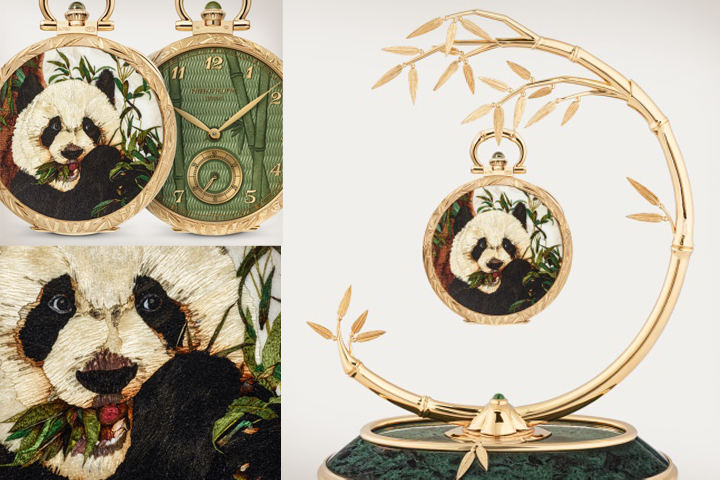Cultural Perspectives • 05 Nov 2021
Patek Philippe Rare Handcrafts
Patek Philippe Rare Handcrafts
Upholding Genevan Ancestral Craftsmanship, Perpetuating the Crown Jewels of Artisanal Watchmaking for the Future
Since the company was founded in 1839, Patek Philippe has always considered its timepieces to be the works of art that reflect the refined aesthetics of mechanical perfection. The quest for immaculacy and harmony comes to the fore in understated, elegant, and timeless designs. It is further emphasized by quality in craftsmanship and the manually executed finissage. With the same passion, Patek Philippe cultivates all techniques used to decorate timepieces, assuring that these skills are handed down through generations.

ROYAL CLIENTALE
From the earliest days of Patek Philippe’s watchmaking history, when Antoine Norbert de Patek and his then-partner, François Czapek joined forces in Geneva in 1839 (six years before the arrival of Jean-Adrien Philippe), offering an undecorated hunter-cased pocketwatch (i.e. a watch case with an additional, cuvette caseback) would have been unthinkable; beginning with elaborate engraving, which was informed by their Polish history, the first enamels soon followed – allusions to masterpieces from significant artistic movements, and finally, miniature portraits, most notably a series of watches dedicated to royal clientele.

THE TRUE BASTION OF GENEVAN CRAFTSMANSHIP
Having always been at the forefront of innovation, Patek Philippe has also long taken upon itself to be the guardian of Geneva’s great watchmaking tradition and the bastion of the finest Genevan craftsmanship. By perpetuating all the specialist artistic skills that have long played a role in the decoration of timepieces, Patek Philippe ensures that manifestation of the invaluable ancestral artisanship continue to shine a spotlight on a wide variety of the contemporary rare decorative handcrafts, emphasizing the brand’s unique commitment to rare handcrafts past, present and future.

Wood Micro-Marquetry
The artistic usage of wood veneers to create a work of art: as exemplified by this 5077P “Royal Tiger” wristwatch, the grain and tint of each species of wood is employed to represent a natural object, as seen in this incredibly lifelike representation of the Bengal tiger, where the direction of the grain meticulously corresponds to the natural nap of its fur on surface areas scarcely three centimetres across.

Artistry of Enameling
Enamel craft involves the usage of crushed silica sand (known as fondant; it is transparent), and having been combined with water to form a paste, can be coloured with metal oxides. The paste is applied to a surface that has been meticulously cleaned and is left to dry. It is then fired in a kiln at approximately 850 degrees Celsius, fusing to its metal base.

Depending on its intricacies, a model may be returned to the kiln for up to twelve times. Enamel is admired for its unchanging properties, being unaffected by UV radiation and often found in the same condition as it was created, unchanged after decades, if not centuries of wear. Often times the enamel artists use one of four traditional techniques, or perhaps a combination: cloisonné technique, champlevé enameling, paillonné enameling and miniature painting on enamel.

>> Discover Patek Philippe Grand Complications
Cloisonné
Cloisonné is an additive enameling technique; a fine wire, usually gold, is bent into segments to form a design and is affixed to a base plate. Multiple segments, or cells, may be created with this fine wire; filled with enamel, they may be fired successive times, depending on the colour, type of enamel used, and the desired play of transparency and depth.

Champlevé
Champlevé is a reductive technique; the cells are engraved beforehand, which are then filled with enamel, and fired in a similar process to that of cloisonné enamel.

Pailonné
Pailonné involves the usage of diminutive pieces of gold leaf, called paillons, which are embedded in layers of transparent enamel.

Miniature Painting
From the outset, the enamel is worked differently, being mixed with oil rather than water. It is then applied with a very fine brush on a ground layer of enamel. Patek Philippe has magnificently represented portraits, landscapes, natural objects, and great works of engineering and art in the most identifiable manner by this technique.

>> Discover Patek Philippe Calatrava
The Inimitable Art of Engraving
Creating neat, shining lines and a subtle play of light, engraving is inspired art upon a difficult metal canvas. Before beginning to engrave a new piece, the artist-craftsman sketches his subject and transfer all the burin’s guiding lines to the metal surface in dry-point. The path traced by the burin based on this sketch requires perfect coordination between the engraver’s hands. One hand pushes the burin onto the metal; the other holds the metal by means of a spherical instrument, the engraver’s ball, which clamps and rotates the piece into the best position as work proceeds.

The Gemsetting – Where Watchmaking Meets Haute Joaillerie
Gemsetting is a delicate art that consists of decorating watchcases by setting them with precious stones, particularly diamonds, gradually spread to embrace every part of the watch, from bracelet to dial, including the lugs, case, and bezel. Gems meticulously chosen, be it diamond, emerald, ruby, or sapphire must be set in time-honored tradition; by hand and never adhesively bonded. The highly precise and delicate art that requires nerves of steel and the highest level of skill.

>> Discover Patek Philippe Nautilus
Guilloché – The Skill Passed on from Artisan to Artisan
Also known as engine-turning work at times, the guilloche is a form of mechanized decoration using an ancient machine operated by hand to create a beautiful engraved patterns on dials, movements, cases, and bracelets. By turning two crank handles simultaneously, the idea is to guide the cutting tool so that it carves fine grooves into a metal surface in repetitive geometric patterns, made of straight or curved lines.

NURTURING THE CROWN JEWELS OF ARTISANAL WATCHMAKING FOR THE FUTURE
Among the most exemplary demonstrations of Patek Philippe’s unique commitment to perpetuate the special artistic skills used to decorate timepieces throughout the brand’s glorious history is the completion of its new production building in Geneva in 2020. With the impressive space of 10 floors and a length of nearly 200 meters, the new manufacture offers ample space dedicated for the rare handcrafts professionals and training facilities.

Not only built to accommodate the manufacture’s growth for up to the 30 years, the new expansion also reasserts Patek Philippe’s precious Genevan roots and its commitment to ascertain that the invaluable Genevan artisanal techniques continue to shine the spotlight on a wide variety of rare decorative handcrafts for many years to come.






